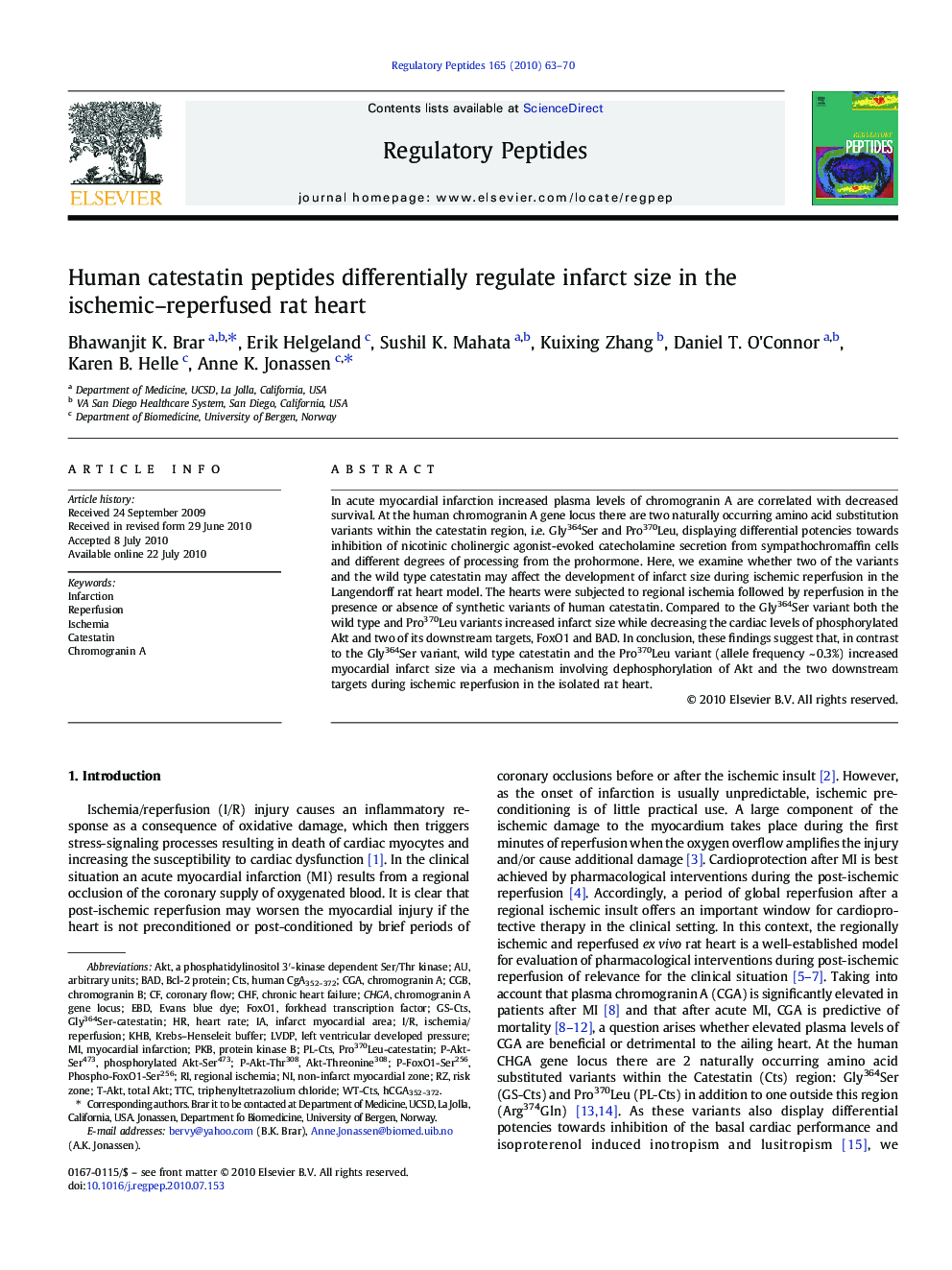| Article ID | Journal | Published Year | Pages | File Type |
|---|---|---|---|---|
| 2022639 | Regulatory Peptides | 2010 | 8 Pages |
In acute myocardial infarction increased plasma levels of chromogranin A are correlated with decreased survival. At the human chromogranin A gene locus there are two naturally occurring amino acid substitution variants within the catestatin region, i.e. Gly364Ser and Pro370Leu, displaying differential potencies towards inhibition of nicotinic cholinergic agonist-evoked catecholamine secretion from sympathochromaffin cells and different degrees of processing from the prohormone. Here, we examine whether two of the variants and the wild type catestatin may affect the development of infarct size during ischemic reperfusion in the Langendorff rat heart model. The hearts were subjected to regional ischemia followed by reperfusion in the presence or absence of synthetic variants of human catestatin. Compared to the Gly364Ser variant both the wild type and Pro370Leu variants increased infarct size while decreasing the cardiac levels of phosphorylated Akt and two of its downstream targets, FoxO1 and BAD. In conclusion, these findings suggest that, in contrast to the Gly364Ser variant, wild type catestatin and the Pro370Leu variant (allele frequency ~ 0.3%) increased myocardial infarct size via a mechanism involving dephosphorylation of Akt and the two downstream targets during ischemic reperfusion in the isolated rat heart.
